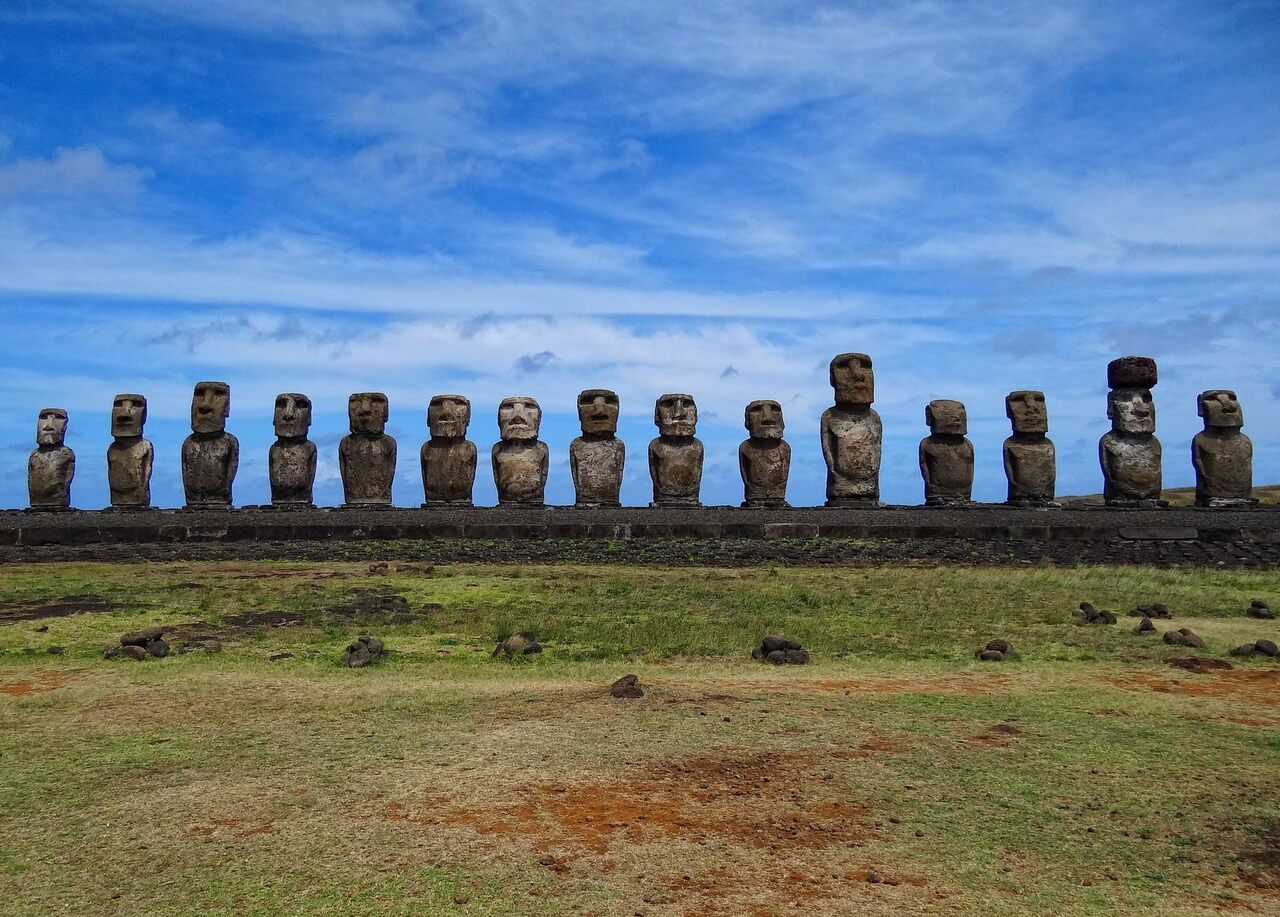Welcome to DU!
The truly grassroots left-of-center political community where regular people, not algorithms, drive the discussions and set the standards.
Join the community:
Create a free account
Support DU (and get rid of ads!):
Become a Star Member
Latest Breaking News
General Discussion
The DU Lounge
All Forums
Issue Forums
Culture Forums
Alliance Forums
Region Forums
Support Forums
Help & Search
Latin America
Related: About this forumEaster Island's Monoliths Made the Crops Grow
By quarrying rock for the statues, the people of Rapa Nui fertilized the soil.
BY REINA GATTUSO
JANUARY 8, 2020

A row of stone monoliths, or moai, on Ahu Tongariki in Rapa Nui. BJØRN CHRISTIAN TØRRISSEN/CC BY-SA 3.0
WHEN EUROPEANS FIRST REACHED RAPA Nui, or Easter Island, on Easter Day, 1722, they were awed to find around 1,000 imposing stone moai, or monoliths, carved in the shape of human beings. The statues overlooked a barren landscape. While archaeological evidence shows that Rapa Nui was once lushly forested, by the time Europeans reached the island, it had been clear-cut, devastated by human overuse, ecological change, or a bloody civil war. The population, which had once likely numbered in the tens of thousands, had been reduced to 3,000 at most.
For the Dutch sailors, many of whom had travelled Polynesia extensively, the sculptures were astounding. Human sculptures are rare in Polynesian art, which more commonly depicts mythic and animal forms. In addition, Easter Island was incredibly remote—more than 1,200 miles away from other populated islands, and 2,100 miles away from Chile, to which it now belongs—and appeared barren. According to Joanne Van Tilburg, a UCLA archaeologist who has researched Easter Island for decades, the sailors regarded the sculptures as a mystery. “How and why did people produce these wonderful sculptures when it was crystal clear that the environment of the island had been completely altered?” she says.
The Dutch, of course, weren’t the first sailors to land at Rapa Nui. That honor goes to the Polynesian seafarers who settled the island by around 1200. While the island likely had significant vegetation, including forests, when they arrived, a 63-square-mile chunk of rock in the middle of vast ocean is an unlikely incubator of a complex society. But the Rapa Nui people initially thrived, producing Polynesia’s only writing system and the famous monoliths.
When Europeans visited Rapa Nui in the 1700s, however, the island’s population was already in decline, and its history getting hazy. The ship’s officers recorded their observations, but the most extensive documentation of the Islanders’ views of their own culture didn’t emerge until 1914, when an English anthropologist, Katherine Routledge, teamed up with a Rapa Nui man, Juana Rapano, to collect oral histories. By that time, after almost 200 years of Peruvian slave raids, missionary activity, and European disease, many memories of precolonial society—including knowledge of the island’s writing system, which died with the elites who mastered it— had been lost.
More:
https://www.atlasobscura.com/articles/what-do-easter-island-statues-mean
Also posted in Anthropology:
https://www.democraticunderground.com/12295299
Felt it would be helpful to post this in the Latin America forum because the article informed the reader the Peruvians actually used citizens from Easter Island as slaves. So obnoxious to learn this so much later. Humans have been a-holes a very long time.
InfoView thread info, including edit history
TrashPut this thread in your Trash Can (My DU » Trash Can)
BookmarkAdd this thread to your Bookmarks (My DU » Bookmarks)
3 replies, 1057 views
ShareGet links to this post and/or share on social media
AlertAlert this post for a rule violation
PowersThere are no powers you can use on this post
EditCannot edit other people's posts
ReplyReply to this post
EditCannot edit other people's posts
Rec (9)
ReplyReply to this post
3 replies
 = new reply since forum marked as read
Highlight:
NoneDon't highlight anything
5 newestHighlight 5 most recent replies
= new reply since forum marked as read
Highlight:
NoneDon't highlight anything
5 newestHighlight 5 most recent replies
Easter Island's Monoliths Made the Crops Grow (Original Post)
Judi Lynn
Jan 2020
OP
FirstLight
(13,364 posts)1. thanks for sharing! bookmarked!
It's amazing also that humans have been fucking up their environments for ages too...it wasnt until we hit the tipping point in global population where it fucked up the whole planet ![]()
Cartoonist
(7,323 posts)2. A documentary I saw
The civil war mentioned was a religious war. The denuding of the lush tropical vegetation was religious driven. They used trees as rolling logs to move the statues. The rise and collapse of the Rapa Nui should stand as the classic case of religion's inherent evil.
BigmanPigman
(51,626 posts)3. Amen to that!
Religion has killed more people than it has supposedly "saved".